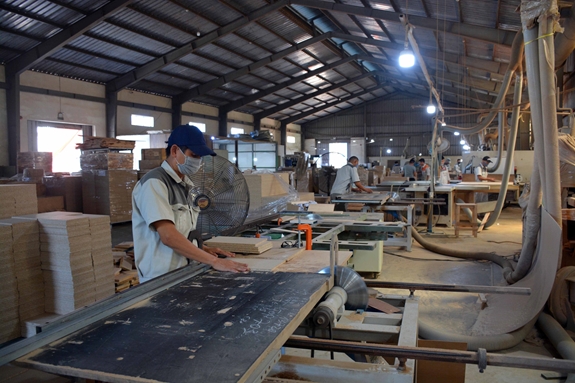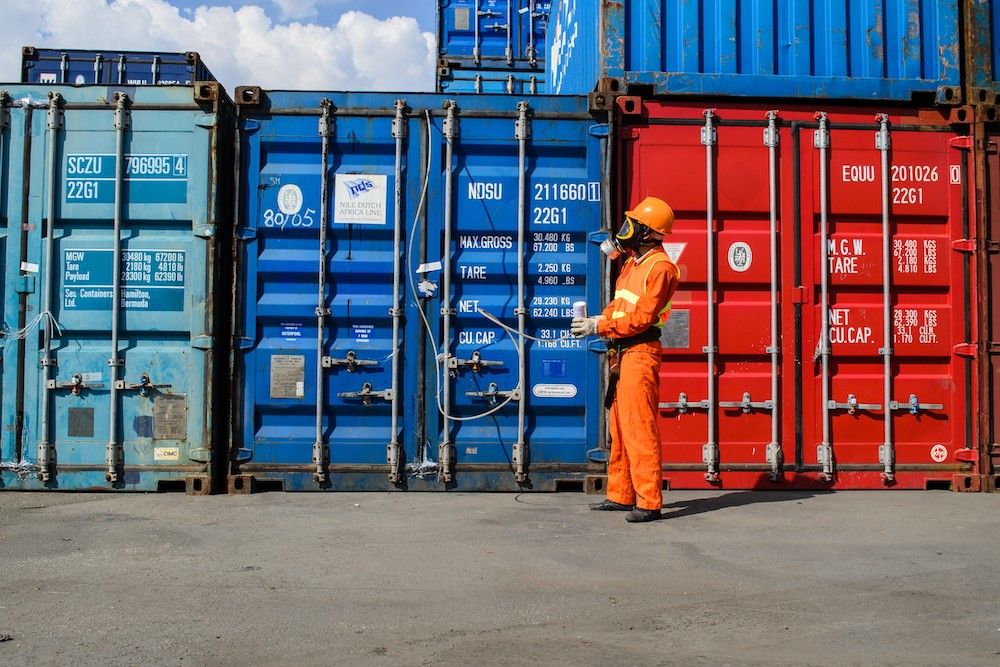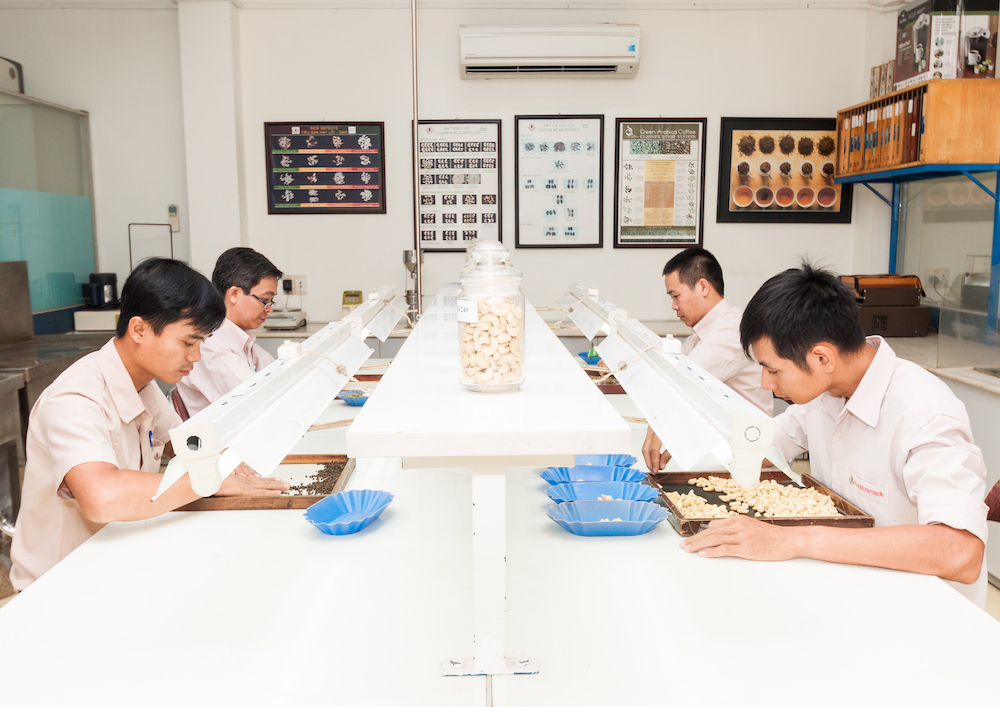Continuing to be significantly affected by the Covid-19 epidemic and the market, some export items such as rice and coffee have decreased. However, from the beginning of 2021, the exports of agricultural products of Vietnam continues having a good growth. What is the export prospect of the agricultural sector in the coming time?
Rice, coffee decrease – fruit, cashew, seafood, rubber increase
According to the Ministry of Agriculture and Rural Development (MARD), the total volume of rice exported in the first two months of 2021 reached 638 thousand tons with a value of 352 million USD, decreased by 31.4% in volume and 18.3% in value compared to the same period in 2020. Similar to rice, coffee exports in the first 2 months of 2021 reached 271 thousand tons and 474 million USD, decreased by 18.5% in volume and 15.6% in value compared to the same period in 2020.
While rice and coffee decreased in both volume and value of exports, other commodities increased significantly. Cashew exports reached 75,000 tons, worth 442 million USD, increased 46.1% in volume and 21.5% in value over the same period in 2020. Due to the cashew export volume increases dramatically, the damand of raw cashew imports for processing is larger. The rubber exports in the first 2 months of 2021 reached 320 thousand tons and 516 million USD, increased by 89.9% in volume and 2.1 times in value compared to the same period in 2020. Notably, Seafood exports from the beginning of 2021 to now reached USD 1.01 billion, increased by 0.7% over the same period in 2020. Exports of vegetables and fruits from the beginning of 2021 to now reached USD 610 million, increased by 14.6% compared to the same period in 2020.

While other commodities have increased or decreased compared to the first months of 2020, furniture and forest products have continued to maintain their “performance” over the past 10 years as they still remain their growth in export. The export turnover of forest products and furniture from the beginning of 2021 to now reached 2.44 billion USD, increased 51% over the same period in 2020.
Although there are a number of export commodities that have decreased, such as rice and coffee, there are still many export commodities that have increased sharply: Vegetables and fruits, seafood, cashew, furniture and forest products, so the export turnover of the agricultural sector has maintained its upward momentum. The total export value of the agricultural sector since the beginning of 2021 has still reached 6.17 billion USD, increased by 16.6% over the same period in 2020.

Talking to a reporter from the People’s Army Newspaper, Mr. Nguyen Quoc Toan, Director of the Department of Agricultural Products Processing and Market Development (MARD) added: Rice exports from the beginning of 2021 to now have decreased compared to the same period of 2020 because Philippines reduced rice purchases from Vietnam in January 2021, while Philippines is currently one of the major rice export markets of Vietnam, accounting for 48% of total rice exports. Although the volume of rice exports decreased, however, price of Vietnam’s export rice still remained at a high level of about 551 USD/ton, especially the type of rice exported to Philippines increased slightly, reaching an average of about 537 USD/ton. Other commodities: fruit, seafood and cashew have “taken back” the growth momentum in export value because the supply chains, including transportation, have gradually recovered after more than a year of the Covid-19 outbreak. In particular, vegetables and fruits have been “back on top” because over the past time, these products have been invested in intensive processing by enterprises to increase export value. Currently, the proportion of processed fruits and vegetables of Vietnam has accounted for about 25-28% of the total export volume.
Receiving good news from the market
The US Customs and Border Protection (CBP) has issued a decision on the lack of evidence to conclude that a large Vietnamese seafood enterprise evaded the anti-dumping tax that the United States is applying to Indian shrimp. Accordingly, CBP canceled the decision issued on October 13, 2020 on the imposition of anti-dumping tax on Indian shrimp to shrimp exported from this Vietnamese company to the US market. This case of evasion of anti-dumping tax was initiated by CBP on October 9, 2019 based on a lawsuit filed by the US Shrimp Trade Enforcement Commission (representing domestic shrimp producers). This is good news for Vietnamese shrimp.
On February 8, 2021, the Cambodian Ministry of Agriculture, Forestry and Fisheries officially announced the cancellation of the ban on importing four types of catfish issued on January 7, 2021. The import of the above four types of fish is carried out normally as before. Previously, on January 8, 2021, the Cambodian Ministry of Agriculture, Forestry and Fisheries announced to stop importing 4 types of catfish such as: Shutchi catfish, cobia, catfish and snakehead fish from neighboring countries sharing the border with Cambodia (including Vietnam) to protect the market for Cambodian fish farmers.

Regarding the reason for the decline in rice exports, the Ministry of Agriculture and Rural Development claimed that the beginning of the year was not the peak of import and export because customers had actively purchased rice to save for the long holiday. Meanwhile, the domestic supply is low when the winter-spring rice crop has not yet been fully harvested; also, the high price of rice makes the purchasing businesses and foreign clients have the thought of waiting for the price to drop. In addition to the seasonal factor, difficulties in transportation due to the shortage of empty containers and the increase in freight rates in recent time has also made rice export activities limited. It is forecasted that in the coming months, rice exports will improve more positively because the March of 2021 is the time when farmers in the Mekong Delta – the country’s largest rice area – harvest the winter-spring rice crop. However, an abundant supply of rice may cause domestic rice prices to drop slightly. On the other hand, the fact that India is promoting rice exports at competitive prices in the international market also puts pressure on Vietnam’s rice prices in the coming time.
Regarding the prospects of exporting agricultural and forest products, furniture and seafood in the coming time, Mr. Nguyen Quoc Toan was quite optimistic: The Covid-19 epidemic was gradually controlled by the world and Vietnam. Especially, with a series of FTAs (Free Trade Agreements): EVFTA, UKVFTA, CPTPP, RCEP… that Vietnam has signed, many export opportunities for agricultural products are opened up. Therefore, the export of agricultural products of Vietnam in the coming time will continue to prosper. In order to continue to grow exports as well as increase the value of agricultural products, we will need to continue to have incentive and support mechanisms for businesses and cooperatives to focus on production and intensive processing of agricultural and forest products, and seafood.








